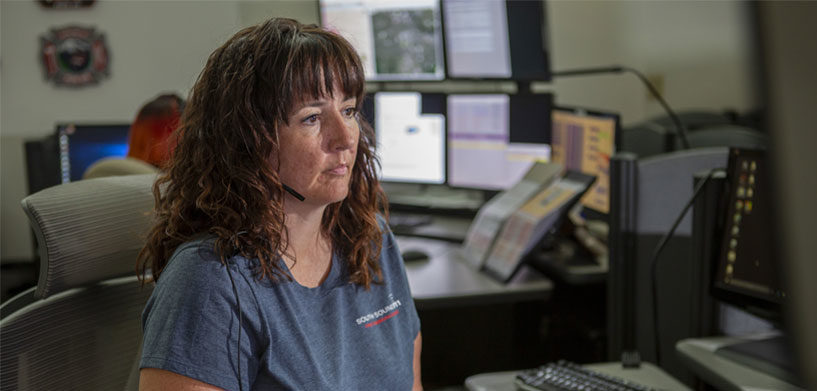Anyone who’s ever worked in a public safety answering point (PSAP) knows it’s not an easy job. Whether it’s handling high-stress calls, trying to dispatch the right resources quickly, or attempting to understand and diffuse growing emergencies, each call presents a new challenge.
According to the National Emergency Number Association (NENA), emergency call-takers and dispatchers endure higher stress levels than other professions, with a significantly higher prevalence of post-traumatic stress disorder (PTSD) than the general public. It comes as no surprise, then, that PSAP employee turnover rates are high.
Stress levels grow as overburdened call-takers and dispatchers are forced to work longer hours, which affects staff well-being, levels of service, and, potentially, community safety. Though the nature of public safety is difficult by default, there are additional factors that make this line of work more demanding than other stressful careers.
High-stress environment
Call-takers and dispatchers are deeply concerned about the safety of first responders, so they want to make effective, timely decisions and give units information that can help them stay out of harm’s way.
When complex emergencies happen, the phones don’t stop ringing. Newer employees are forced to quickly develop the necessary mental and emotional resiliency while also dealing with a steep learning curve. For some, the pressure is too much, and they seek employment elsewhere.
Information overload
Dispatch coordinators and tactical dispatchers whose job is to identify and direct responses to emergencies have the stressful task of combing through a deluge of computer-aided dispatch (CAD) data, alarms, and video feeds.
This growing collection of disparate data creates operational blind spots and increases the risk of large, rapid-onset events. Wider impacts and volumes of information would require a greater effort to manage, resulting in reduced capacity to monitor and handle secondary emergencies.
Always on defense
The work of a PSAP employee is reactive, with limited ability to get ahead of the curve. Spotting connections between events, especially during complex emergencies, is a challenge because call-takers and dispatchers often rely on personal knowledge and simple contextual searches within CAD data.
This results in concern over errors and stress from second-guessing decisions. Stress magnifies from increased workloads and more applications and information to monitor.
How artificial intelligence can help
Technology alone cannot eliminate challenges faced by PSAP personnel, but assistive AI within a CAD system can help call-takers and dispatchers identify emerging complex emergencies earlier in their development. It also enables them to make better-informed decisions and share timely insights that can help field personnel and citizens stay safe.
Through continuous, autonomous assessment of operational data behind the scenes, assistive AI uncovers more connections, sooner. This reduces the pressure of being solely responsible for spotting critical links, which aids worker well-being. It also takes pressure off new hires while they gain experience about communities and events.
By filling the blind spots and equipping call-takers, dispatchers, and dispatch coordinators with richer situational awareness, agencies have an opportunity to intervene earlier and contain complex emergencies. The end result is increased confidence in decision-making and reduced stress on call-takers and dispatchers.
Learn more
To learn more about how assistive AI can help reduce stress on PSAP staff, check out our infographic.
















